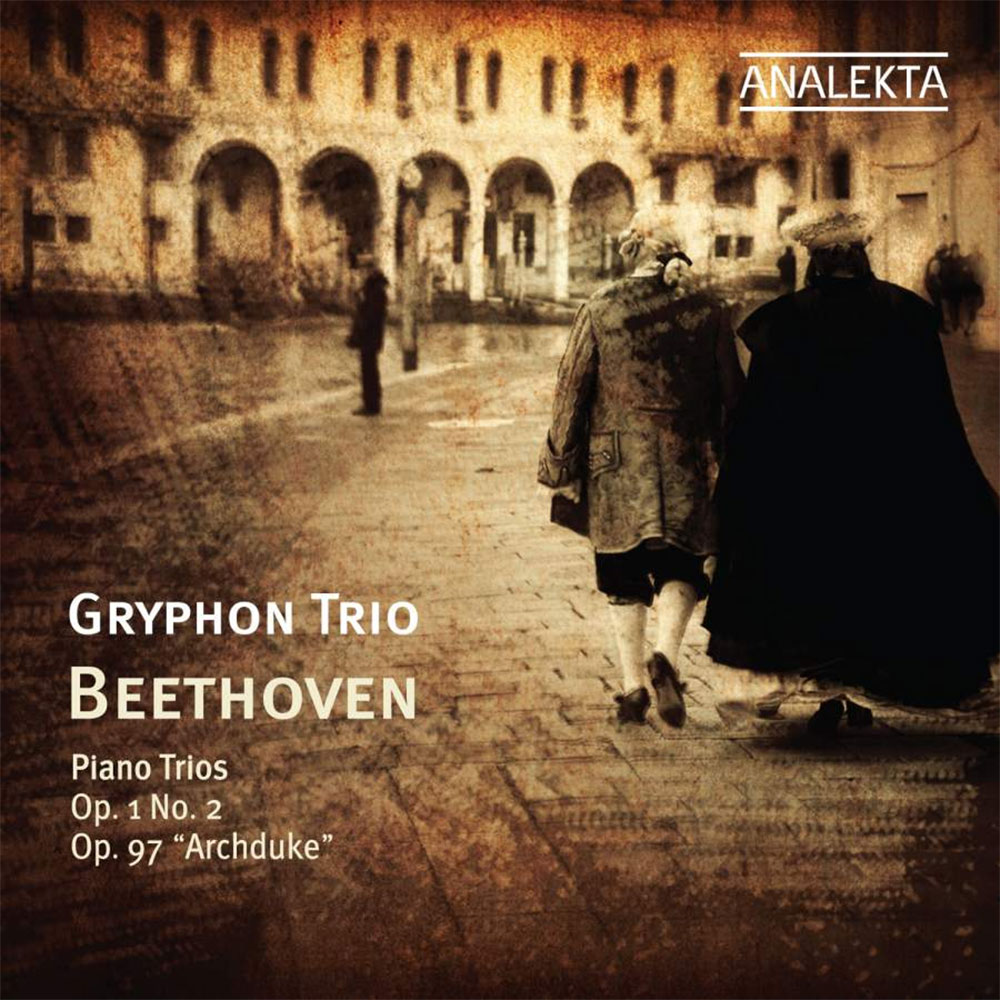Since Beethoven never obtained an official court position, he depended upon the generosity of Viennese music-loving aristocrats such as Lichnowsky for his livelihood. (In 1800, Lichnowsky began paying the composer a sizeable annuity.) Among Beethoven’s other devoted benefactors was the Archduke Rudolph, a talented amateur musician and younger brother of the Emperor of Austria. Beethoven dedicated his Fourth and Fifth Piano Concertos, and several other important works besides, to the Archduke. In 1809, the Archduke arranged a consortium of aristocrats to fund a lifelong annuity for the now-famous composer. In gratitude, Beethoven dedicated his last piano trio, Op. 97, composed in 1811, to the Archduke.
The “Archduke” trio is not only in the genre but also one of his finest lyrical achievements. Its stately and expansive opening theme immediately establishes the monumental character of the whole piece. Compared to the Op. 1 trios, the string texture is far richer: sustained double-stops in the violin and exquisite pizzicato passages of a scope never before attempted in a trio. Most striking, perhaps, is the carefully-wrought balance between piano and strings, the latter often serving as inner voices. The result is a finely blended sonority that rivals that of the more homogeneous string quartet.
A particularly delicate balance among instruments occurs in the latter part of the first movement’s development. Distant echoes of the principal theme dissipate into a web woven with stealthy pizzicato and gossamer piano staccato and trills. A light breeze then wisps the fragile web into the ether; and in strides the recapitulation, now varied and ornamented.
In this movement—indeed, in the whole trio—Beethoven unfolds the musical argument at a leisurely pace. Ideas float by at a rate that allows each to be individually savoured and mulled over. This is Beethoven at his most reflective.
What follows is not a slow movement but a scherzo, the first such inner-movement reordering in a trio. Cheery and tuneful, the scherzo maintains the work’s relaxed tone by attenuating the expected play on accent and rhythm so typical of the genre. A dark side nevertheless creeps into the central trio: a slithery, chromatic fugato infuses the movement with an element of foreboding.
The ensuing Andante and finale, performed without break, combine into a large expanse that underscores the work’s spaciousness. The slow movement’s serene, chorale-like theme is the basis for four variations. The increasingly rapid rhythmic energy of each variation reaches a climax in the fourth, in which syncopation mingles with a dense string texture and elaborate piano figuration. The complicated texture unravels in the theme’s restatement, now tinged with melancholy, and the movement sleepily drifts off … only to be jolted awake by the boisterous barnyard romp that follows—the kind of earthy rondo finale of which Beethoven was so fond.
Beethoven composed the “Archduke” trio at the tail end of the decade during which his art blossomed into full maturity. In this remarkably productive period he penned a multitude of masterpieces, including the opera Fidelio and the Fifth and Sixth Symphonies. Sixteen years after the publication of his Op. 1, and two years after Haydn’s death, Beethoven’s financial security was assured and his fame spreading internationally. Few had reason to doubt that he had fulfilled Waldstein’s prophecy.
